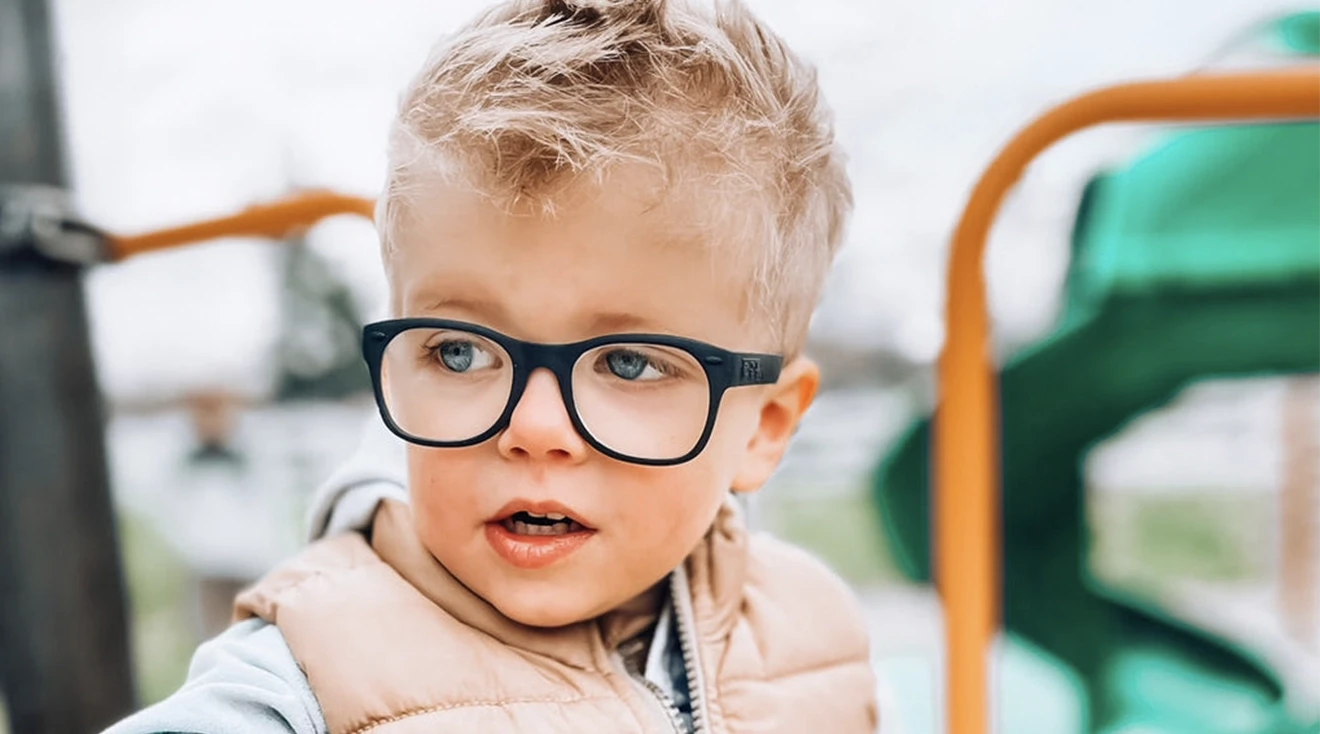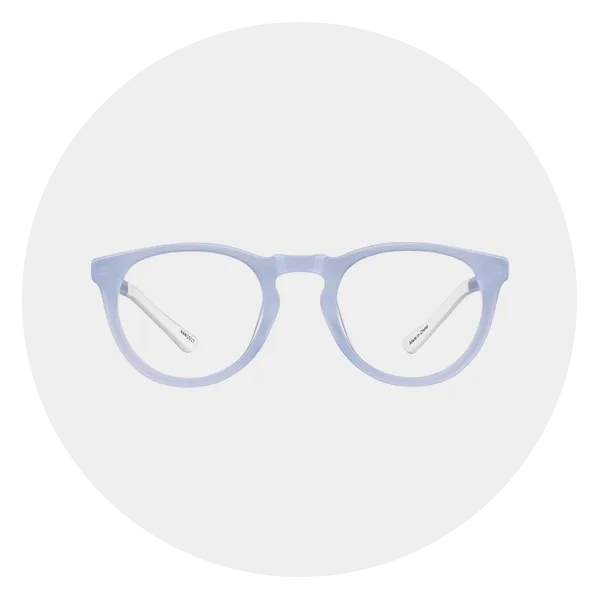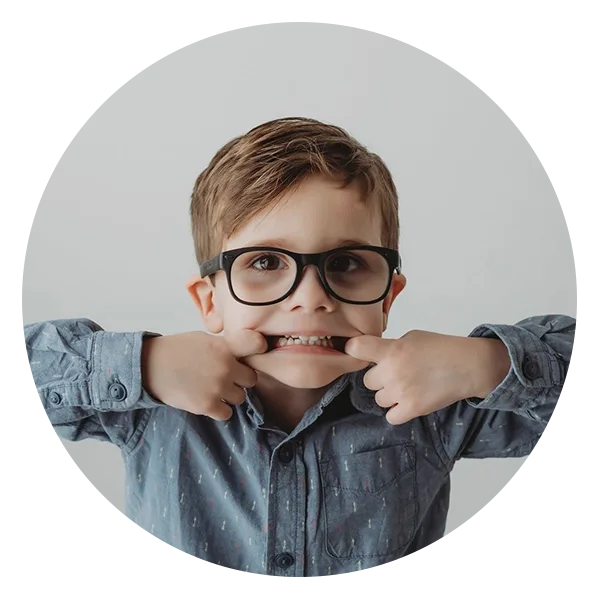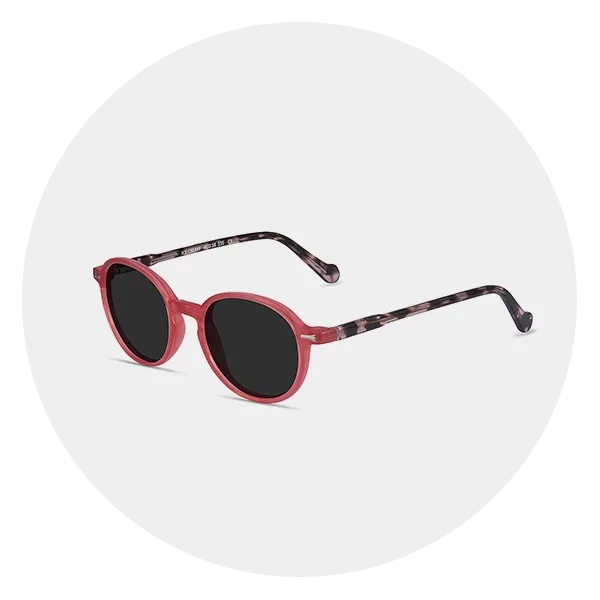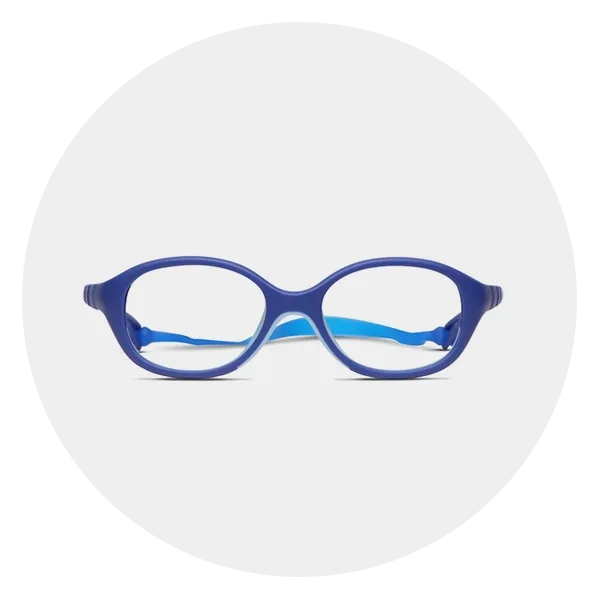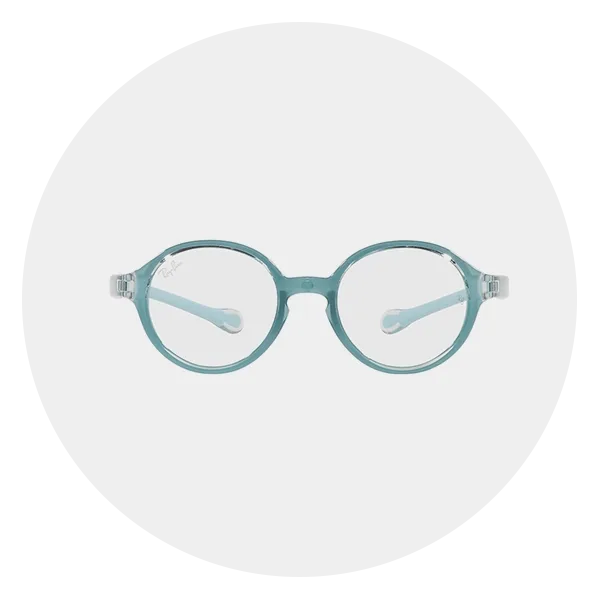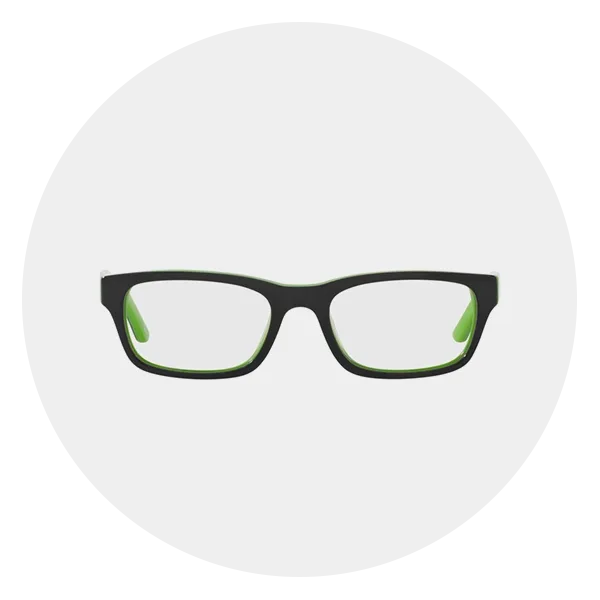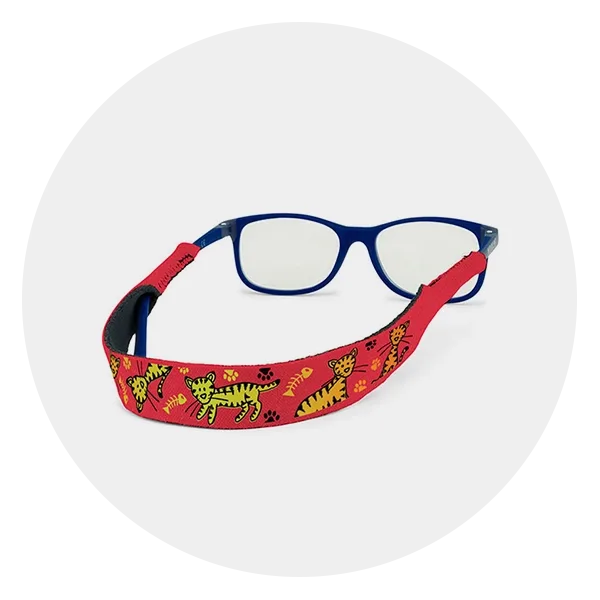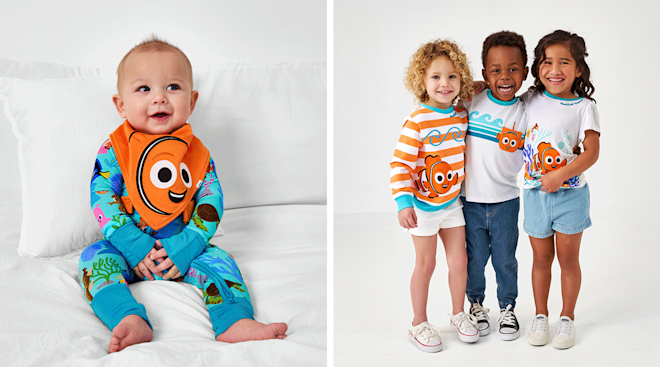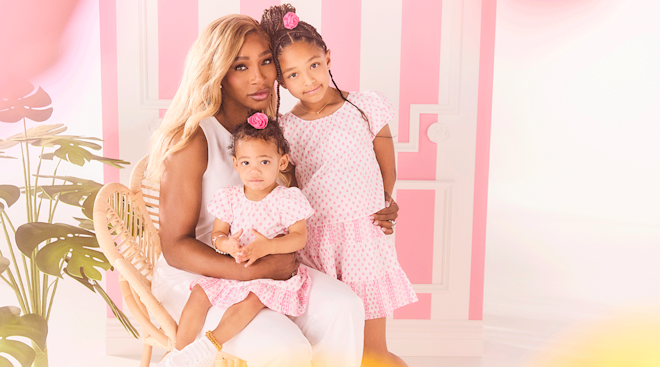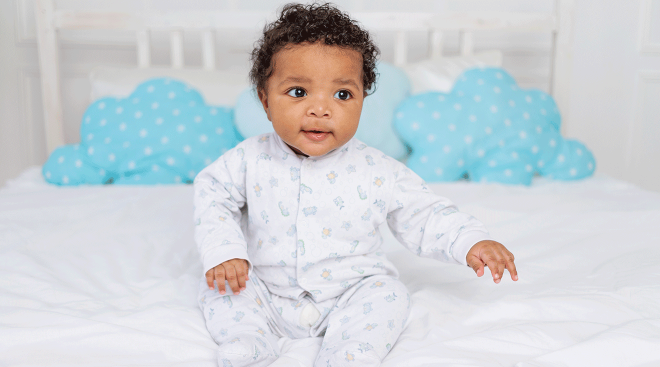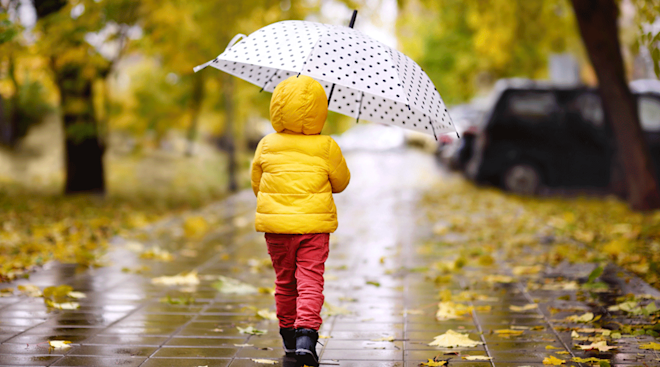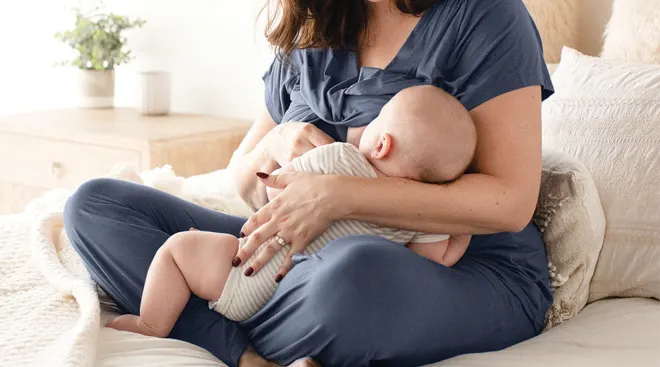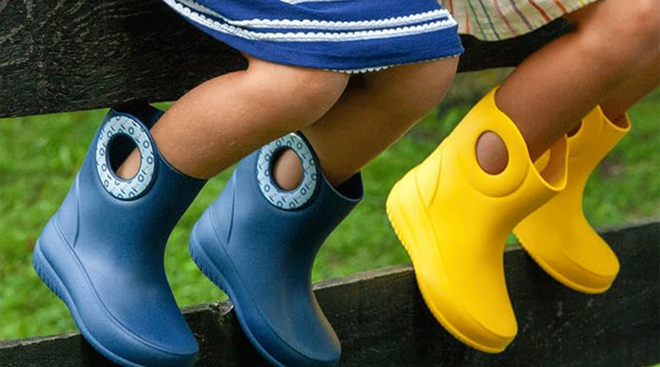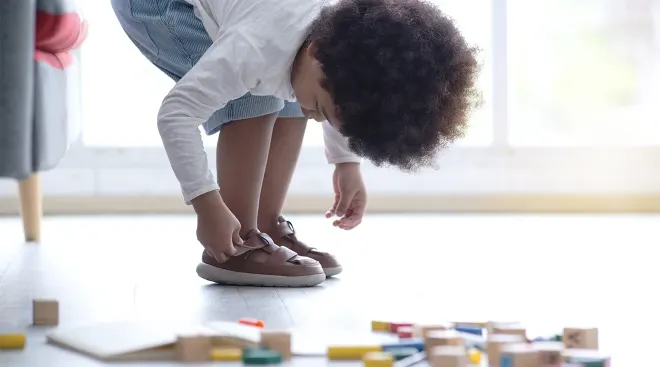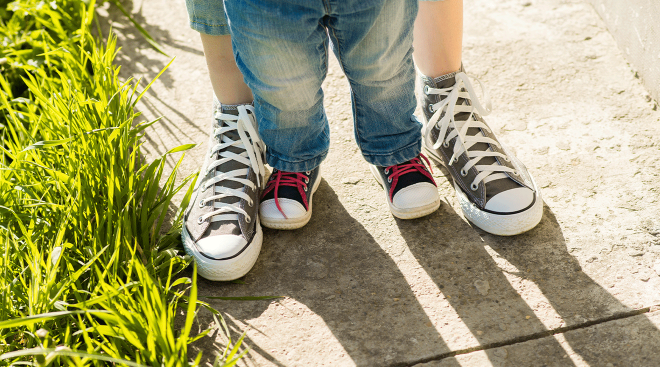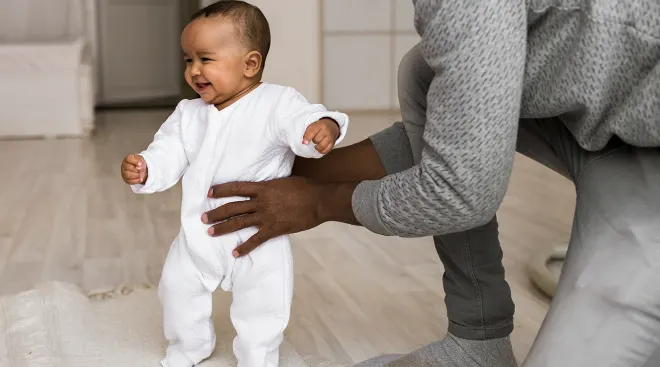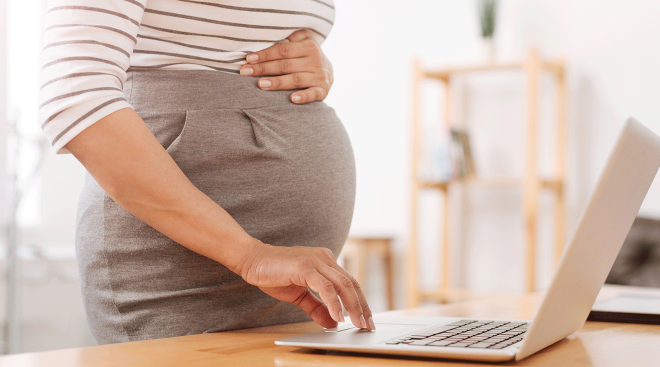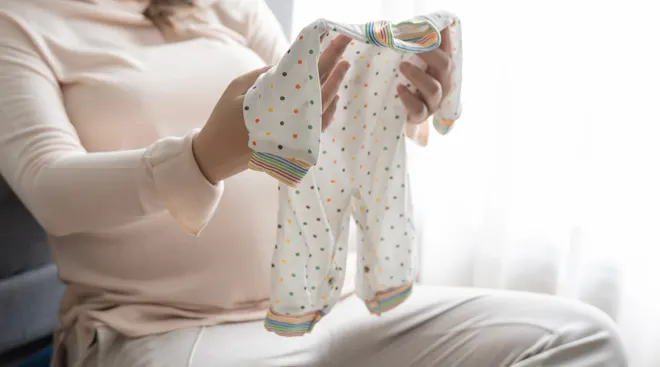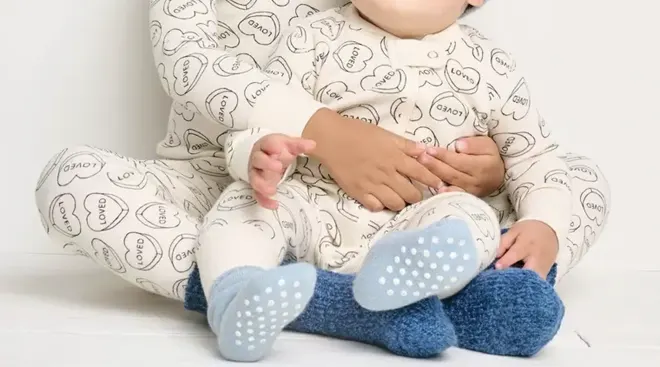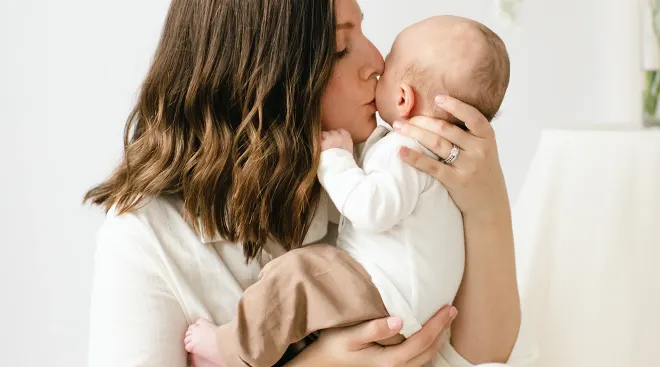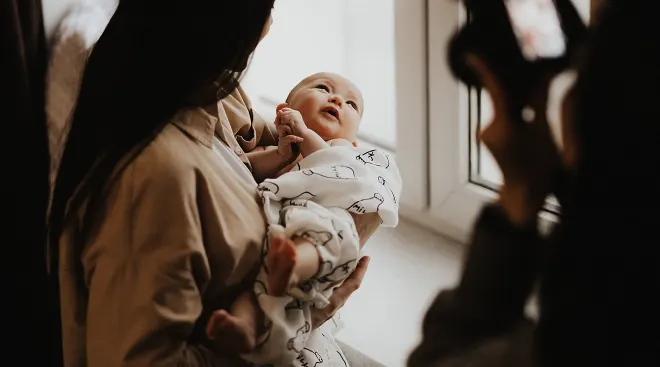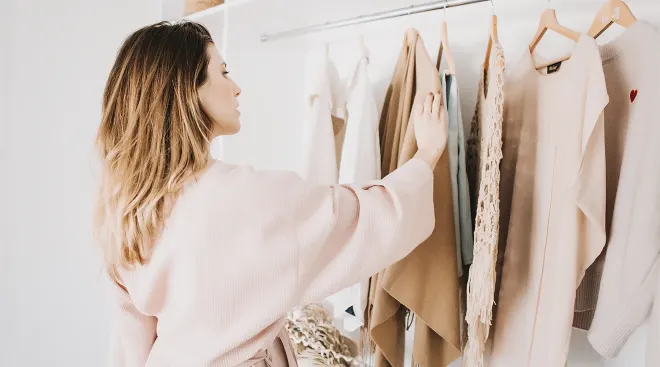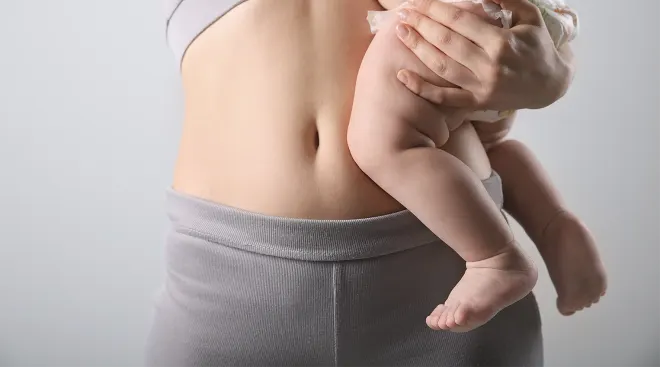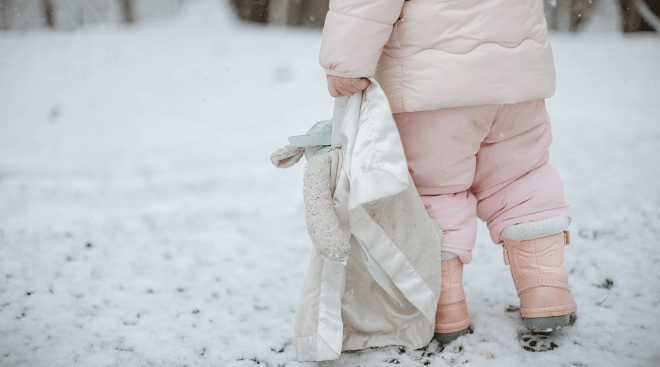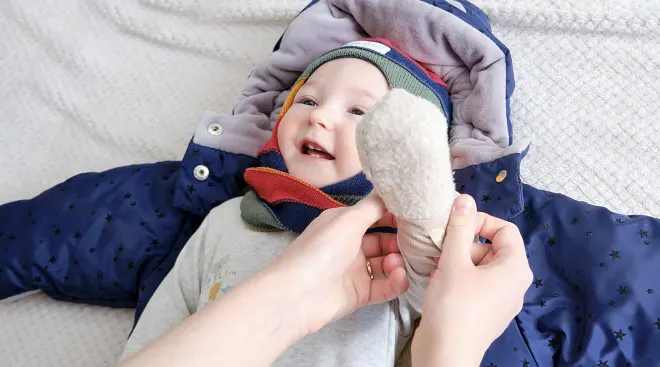The Best Kids’ Glasses for Babies, Toddlers and Beyond
Finding out your kiddo needs glasses may send you spiraling, but don’t lose sight of what’s important here: Correcting the issue so your child can see the world in all its glory. That’s where prescription glasses for toddlers and kids come in. With the right pair of glasses, your child will be able to see clearly and, if needed, you can work towards resolving other common problems (like a lazy eye or crossed eyes).
Before your kiddo sports their new eyewear there are a few steps to work through—including an initial screening, a comprehensive eye exam, a diagnosis, prescription pass along and finally purchasing the perfect pair of specs. If you’ve just learned that your little one needs glasses or are starting to suspect they may have an eye problem, keep reading for expert tips and our picks of the best toddler glasses to shop right now.
Take advantage of early screenings
According to Rupa Wong, MD, a board-certified pediatric ophthalmologist based in Honolulu, Hawaii, “Vision screenings are the best way to detect childhood eye disease early.” Newborns actually get their first visual screening in the hospital, which assesses the overall health of their eyes and their red reflex. This quick, non-invasive test checks for corneal abnormalities, cataracts or more serious considerations like retinoblastoma. Then, from ages 1 month to 4 years, kids will have regular eye checks and informal screenings during regular doctor’s checkups. “Your child’s pediatrician should be checking the general external components of the eye, how your child tracks objects and if there are any abnormalities in their red reflex, and referring parents to an ophthalmologist, when appropriate,” notes Wong. ~
Children classified as high-risk for vision-threatening conditions (based on genetic predispositions or abnormalities detected in early screenings) should be seen by an ophthalmologist for a comprehensive eye exam—sometimes as soon as they’re one year old. However, Wong says that if there isn’t a family history of eye disease or eye cancer, kids usually won’t need a comprehensive eye exam until they hit preschool age. Unless, of course, there is a significant change in their vision.
Signs your child might need glasses
While visual screenings are a must, it’s important to observe your child’s behavior for indicators of eye problems. Here are four common signs from Johns Hopkins Medicine that your child may need an eye exam with a ophthalmologist:
- Squinting: If your child squints or tilts their head when looking at things, they may be trying to focus on something that looks fuzzy or unclear.
- Sitting too close to a television or screen. Seen your tot scoot up closer to the TV or looking at a tablet at a shockingly close vantage point? This is a potential sign of nearsightedness.
- Rubbing their eyes frequently. Excessive eye rubbing may indicate that your little one is experiencing eye fatigue or strain.
- Complaining of headaches. Headaches or eye pain are another sign that your tot may be straining their eyes in order to see things clearly.
Aside from the clues listed above, keep an eye out for notes home from their day-care or teacher that say your child is struggling to pay attention or is mirroring ADHD behaviors. “Teachers, childcare providers and pediatricians are often the ones who might notice a child has difficulty seeing with one or both eyes since they interact with your child in different ways than parents do,” explains Wong.
According to Wong, a comprehensive eye exam with a pediatric specialist usually follows the formula below:
- Eye chart check. If your child is old enough, they’ll be asked to read an eye chart. This might consist of letters, symbols or pictures.
- Dilation. According to the American Academy of Ophthalmology (AAO), eye drops are used to dilate the pupil during the exam. This gives the ophthalmologist a fuller view inside the eyes (and yes, Wong says that even babies can have their eyes dilated safely). At this point the examiner will also shine a bright light into your child’s eye using a headset and lens.
- Refraction exam. When dilating drops are used, they also paralyze the focusing muscles of the eyes, which Wong says allows the eye care team to check the refractive state of your child’s eye. This gives your provider an accurate sense of their patient’s vision needs as they use a series of lenses to measure things like nearsightedness (myopia), farsightedness (hyperopia) and astigmatism.
- Prescription assessment. Additional pictures may be taken of the inside of your child’s eye along with a refraction measurement (their official glasses prescription) that is taken with machines. This print out is what you’ll use when you’re shopping for prescription kids’ glasses.
How to prepare a young child for an eye exam
Is your little one scheduled for an eye exam? Give them a head’s up about what is going to happen. Dilation is no picnic for parents, so thinking it’ll be a breeze for a baby, toddler or preschooler is a bit too optimistic. Rather than glossing over any potential discomfort, talk them through the process ahead of time. Wong says to reassure your child that the weird or unpleasant feeling won’t last forever—she likens the experience to opening one’s eyes underwater in salt water or a chlorinated pool (something that nearly all children have felt at one time, when learning to swim). It also helps to talk them through any disorientation: “I will usually count with my patients and then ask them how they feel,” says Wong.
Full disclosure: Wong recommends parents buy glasses for infants, toddlers or very young children in person. For kiddos who are trying glasses for the first time or need an update to an existing prescription, the fit is going to matter in a major way. According to The American Association for Pediatric Ophthalmology and Strabismus (AAPOS), “frames should not touch the cheeks or eye lashes and the eyes should be in the center of the lenses.” In addition, comfort is key. If your child doesn’t feel comfortable wearing their glasses, they’ll simply toss them aside the moment you turn your back. “The fit of the arms of the glasses around the ears, the placement of the nose bridge and even the weight of the glasses are all things to take into consideration when purchasing glasses and a licensed optician will have the knowledge to guide you the best,” explains Wong.
With that said, shopping in person isn’t always possible and online stores offer a larger selection of frames, often at more affordable prices. So if you’d like to shop online you certainly can—just keep these things in mind:
- Warranty process. Over time your doctor may adjust your child’s prescription, which means they may need new lenses. Kids’ glasses with a warranty allow you to reuse the frames (as long as they still fit appropriately). “Typically glasses purchased at a doctor’s office will have a one-year warranty on the lens and will allow for remakes for free, but some online sites do not allow for this, so check the fine print,” cautions Wong. It’s also a good idea to check the return policy before you buy, as if the frames don’t fit your child properly you’ll need to get a new pair.
- Lens quality. It’s important to choose glasses with high-quality lenses. For kids under 18 years old, lenses should only be made out of lightweight polycarbonate material, which is shatterproof.
- Insurance coverage. Not every online eyewear store accepts insurance—so you’ll need to do some digging. Our advice? Look through the FAQ page, or possibly even ask the site’s online chatbot (if they have one) to find up-to-date information about insurance coverage. Most sites will take FSA/HSA credit. Other sites may not accept insurance, but you can still submit your bills to your insurance provider for a partial or full reimbursement (just be sure to ask for an itemized receipt).
When shopping online keep your kids’ prescription handy and make note of their pupillary distance (PD) too, you’ll need to input this information before making a purchase. There are plenty of sites dedicated to exceptional eyewear for adults and kids alike, but the following retailers are among our favorites.
- Zenni Optical: Zenni Optical has a sophisticated virtual try-on system that lets you scan your child’s face to determine their face shape and find which style works best for them. There’s also an option to upload a photo of your child’s eye prescription directly to the website, so there’s no room for confusion. Need a pair of toddler glasses in a hurry? This site has a range of “fast frames” that will be shipped to your door within 3 to 5 days.
- Roshambo Eyewear: Roshambo has a colorful range of prescription glasses, sunglasses, sports eyewear and accessories for babies and toddlers. Practically unbreakable, all of the bendy frames are BPA free, small parts tested and come with single vision polycarbonate lenses. The best part? You can test the frames at home with a free try-on-kit.
- GlassesUSA.com: This online optical store has an excellent score on Trustpilot and offers a 14-day money back guarantee if you’re not satisfied with your purchase. The site’s range of kids’ glasses includes frames by Ray-Ban, Emporio Armani and Oakley—because there’s nothing cuter than a toddler in a pair of designer specs.
- Target Optical: For the best eyewear deals head straight to your local Target. With over 500 locations nationwide, you can order online and pick up the glasses in-store. Glasses come with a one-year extended warranty and the team at Target Optical offer cleanings and adjustments at any time.
Whether you shop online or in a bricks-and-mortar store, be sure to involve your child in the process of choosing their glasses. “Let your child choose the color or even the shape of the frame,” encourages Wong. This gives them control and makes them proud to actually wear their glasses! Now that we’ve opened your eyes to all the steps involved, here are a few pairs of toddler and kids’ glasses we love.
Overall best kids’ glasses
- Virtual try-on feature
- Gender-neutral design
- Frames come with a basic prescription lens, anti-scratch coating and UV protection
- Glasses strap and ear cushions sold separately
- Zenni doesn’t take insurance, but will use FSA/HSA account cards
How dreamy are these periwinkle blue kids’ glasses? Crafted from lightweight acetate (a polymer plastic), these glasses are cute and comfortable. Durable spring hinges can withstand a little rough handling and flexible temple tips won’t dig into your kids’ temple. These frames are available in a small size for children between 4 and 7 years old and extra-small for toddlers 1 to 3 years old. Plus, they come in grown-up sizes as well, meaning you could even buy yourself a pair too!
Age range: 1 to 18 years | Frame material: Acetate
The best toddler glasses
- Flexible frames
- Impact-resistant polycarbonate lenses
- Available in 18 colors
- Higher strength prescriptions cost $50+
Roshambo are a Bump favorite, thanks to their super-cool baby sunglasses, so you can imagine our delight to find they make toddler glasses too. Our top pick? This Wayfarer style that’ll make your tot look like a mini Clark Kent—how cute! Aside from the cool factor, these frames caught our eye for a few different reasons. Described as “virtually unbreakable,” the frames are flexible and bendable, which is a must for rough-and-tumble tots. Better yet, you get a lot for your money: these glasses come with single vision lenses, a carry case, a silicone head strap and ear adjusters for the perfect fit—so many bonuses! For an additional fee, you can upgrade to lenses with an anti-reflective scratch coating and lock in a one-year warranty, which gets you a replacement lens set within the first year of purchase.
Age range: Baby size (0 to 2 years); toddler size (2 to 4 years) | Frame material: Plastic
The best baby glasses
- Impact-resistant polycarbonate lenses
- No sharp metal parts
- Interchangeable parts allow for a custom fit
- No option to snag a spare pair
In our book babies always look cute in glasses—but this pair is extra-adorable. As the name suggests, these baby glasses are nice and bendy but they also happen to be hypoallergenic as well as free from BPAs, lead and latex, so if your teething tot starts drooling all over this pair, it’s okay! Worried about baby outgrowing their glasses? This pair comes with interchangeable arm attachments that rest at baby’s temple and a soft head strap for a custom fit. The parts are easy to switch up, simply snap the new temple pieces in or out as needed.
Age range: Small (0 to 2 years); medium (0 to 3 years) | Frame material: Silicone
The best kids’ prescription sunglasses
- Virtual try-on tool
- Easy manual prescription upload
- 24/7 customer service via email, phone or the live chat function
- Polarized lenses cost an extra $40
- Won’t take insurance, but will use FSA/HSA account cards
When the sun shines your little one will need extra eye protection, so it’s a good idea to have a pair of prescription kids’ sunglasses to hand. This pair by Eyebuydirect is made from lightweight acetate and has spring hinges that won’t break if they’re slightly manhandled (kids will be kids). Plus, you also have 14-day free returns, which afford you a one-time replacement or refund within two weeks of receiving your order—no questions asked. We recommend adding the “polarized” sun protection, for an additional $40, as it’s unclear what kind of broad-spectrum protection their basic sunglasses are equipped with.
Age range: Small (no age recommendations provided) | Frame material: Acetate
The best flexible glasses
- Virtual try-on tool
- Affordable price point
- GlassesUSA accepts several insurance plans and FSA/HSA account cards
- Indestructible polycarbonate lenses cost an extra $69
Okay, so when you’re buying kids’ glasses, one phrase you’ll want to zero in on is “unbreakable.” Kids are destructive (harsh, but true) and they’ll put their glasses through a lot in the years to come, so you’re going to want a pair that can stand up to rambunctious behavior. Fortunately these frames by GlassesUSA are dependable and stylish. Durable temple fixtures won’t crack or crimp and the flexible strap will keep them comfortably in place.
Age range: Toddler (2 to 5 years); kid sizes (6 to 10 years) | Frame material: Plastic
The best kids’ designer glasses
- Stylish design
- Frame and lenses made to match for a precise fit
- Built-in UV protection as standard
- High price point
When it comes to designer glasses, Ray-Bans are always a good choice. They have tons of cute styles on offer but this round pair really caught our eye. Available in five transparent hues, the frames are made from a resilient, flexible material that’s designed to last. The best part? Standard single vision lenses come with anti-reflective and anti-smudge treatments, UV protection and a scratch resistant coating at no additional cost.
Age range: Infant (0 to 3 years); Kid (4 to 6 years) | Frame material: Injected
The best budget-friendly glasses for toddlers
- Affordable price point
- UV protection and anti-scratch coating
- Insurance accepted
- No virtual try-on
- Limited colorways
Looking for an affordable pair of toddler glasses? We hear you. These cheap kids glasses check the box in terms of quality and style. Available in neon green or a cool monochrome pattern, these rectangular frames are made from durable acetate. Better yet, the lenses come with UV protection and an anti-scratch coating. Want to give yourself a little cushion for breaks, bumps or scratches? Simply check the box for Target’s Worry-Free Protection Plan—and get a one-year warranty for unlimited repairs and replacements.
Age range: Extra small (no age recommendations provided) | Frame material: Acetate
The best kids’ glasses strap
- Stretchy neoprene strap is adjustable
- Affordable price point
- Limited reviews
Keeping glasses on your kids’ face—rather than in their pocket or under the couch cushions—can be a monumental task. That’s where a glasses strap comes in handy. While many of the options on our list do have a built-in strap, it’s possible to buy a universal glasses strap separately if you opt for a frame without one. Croakies has a ton of “retainer” options that provide extra security and stay-put power. This cute animal-print strap is made from stretchy neoprene and is adjustable for a comfortable fit.
Age range: One size fits most (no age recommendations provided) | Material: Neoprene
To help streamline your shopping and highlight the best kids’ glasses, we considered a list of criteria when sourcing products, including convenient features, ease of use, quality, durability, value and safety, most importantly. We referenced recommended child vision screening schedules from the American Academy of Ophthalmology and compared notes with an Ivy League-trained board-certified pediatric ophthalmologist. We also read user reviews to get the lowdown on how these products work for families and used our editorial team’s own experiences finding glasses for our own children to lend a more personal touch to the product curation.
Interested in learning more about our editorial process? Read about how our team develops and reviews all articles here.
About the expert:
Rupa Wong, MD, is a board-certified pediatric ophthalmologist and managing partner of Honolulu Eye Clinic based in Hawaii. She received her medical degree at Cornell University, followed by a residency in ophthalmology at New York University-Manhattan Eye, Ear & Throat Hospital. Wong has been featured on the Best Doctors Lists since 2010 and serves as a Clinical Associate Professor at University of Hawaii School of Medicine.
Plus, more from The Bump:
Navigate forward to interact with the calendar and select a date. Press the question mark key to get the keyboard shortcuts for changing dates.
































